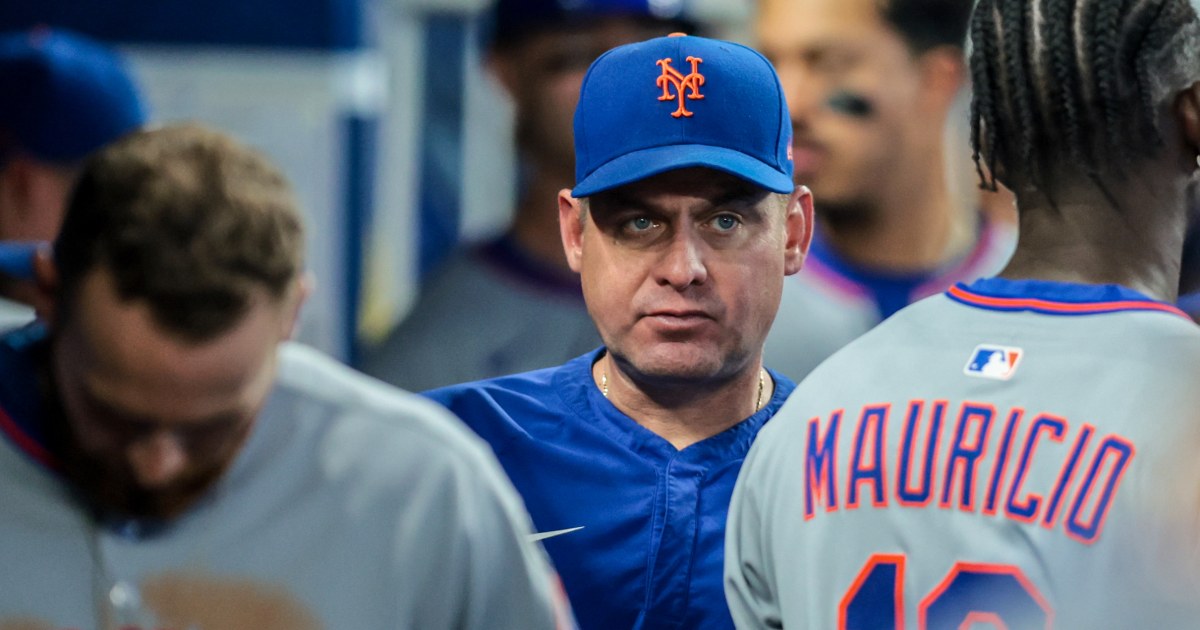In the high-stakes world of Major League Baseball, few stories capture the unpredictable nature of the sport quite like the New York Mets’ spectacular 2023 collapse. Despite assembling one of the most expensive rosters in baseball history with a payroll exceeding $340 million, the Mets became the only team among the five highest-spending franchises to miss the postseason entirely.
The Rise and Fall of Championship Aspirations
The mathematics of baseball success seemed to favor the Mets throughout much of the 2023 season. Following a decisive victory against the San Francisco Giants on July 27, the team boasted an impressive 62 wins, positioning them as the second-most successful franchise in Major League Baseball at that point. According to advanced analytics from Fangraphs, the Mets enjoyed a staggering 96.8% probability of securing a postseason berth—a statistical near-certainty that would soon prove devastatingly misleading.
However, the ensuing two months and two days would transform this tale of expected triumph into one of baseball’s most shocking disappointments. The Mets’ dramatic fall from grace represents more than just a statistical anomaly; it embodies the fundamental unpredictability that makes baseball both captivating and heartbreaking.
The Financial Investment: Breaking Down the $340 Million Roster
To understand the magnitude of this collapse, it’s essential to examine the substantial financial commitment that Mets owner Steve Cohen made to championship contention. The $340 million payroll represented one of the largest investments in player salaries in MLB history, reflecting Cohen’s aggressive approach to building a championship-caliber team since acquiring the franchise.
This astronomical figure placed the Mets among an exclusive group of just five teams that exceeded the $250 million payroll threshold in 2023. The investment encompassed high-profile free agent signings, contract extensions for key players, and the retention of established stars—all designed to create a roster capable of competing at the highest level.
Comparative Analysis: Big Spenders and Playoff Success
The contrast becomes even more stark when examining the postseason success of other high-spending franchises. While specific details about the other four teams exceeding $250 million in payroll weren’t provided in initial reports, historical data suggests that substantial financial investment typically correlates with playoff appearances and championship contention.
The Mets’ failure to convert their massive financial investment into postseason success raises fundamental questions about the relationship between spending and achievement in modern baseball. It challenges the conventional wisdom that money can reliably purchase playoff berths and championship opportunities.
Anatomy of a Historic Collapse
The Mets’ downfall represents more than just poor performance—it constitutes a historic collapse that will be studied and referenced for years to come. To squander a 96.8% playoff probability requires a perfect storm of negative factors that extend far beyond simple bad luck.
Potential Contributing Factors
While specific details about the team’s second-half struggles weren’t elaborated in initial reporting, several factors typically contribute to such dramatic collapses:
- Injuries to key players: The loss of crucial contributors can devastate even the most talented rosters
- Underperformance of high-priced acquisitions: When expensive free agents fail to meet expectations, it creates both financial and competitive problems
- Team chemistry issues: Internal conflicts or clubhouse problems can undermine on-field performance
- Managerial decisions: Strategic choices regarding lineups, pitching rotations, and in-game management can significantly impact results
- Competitive pressure: The weight of expectations from a massive payroll can create additional stress and pressure
Broader Implications for Baseball’s Economic Landscape
The Mets’ expensive failure carries implications that extend far beyond Queens and into the broader conversation about competitive balance and financial equity in Major League Baseball. Their collapse serves as a cautionary tale about the limitations of purely financial approaches to team building.
The Luxury Tax and Competitive Balance
With a $340 million payroll, the Mets undoubtedly triggered significant luxury tax penalties designed to discourage excessive spending and promote competitive balance. Their failure to reach the postseason raises questions about whether these financial penalties are achieving their intended purpose or simply creating additional costs for wealthy owners willing to absorb them.
The situation also highlights the ongoing tension between large-market teams with substantial financial resources and smaller-market franchises operating with more modest budgets. When high-spending teams fail, it can temporarily level the competitive playing field, but it doesn’t address the underlying structural advantages that financial resources provide.
Lessons for Future Franchise Building
The Mets’ experience offers valuable insights for other franchises considering similar financial commitments to championship contention. Money alone cannot guarantee success in baseball, where factors like player development, team chemistry, health, and strategic decision-making play crucial roles.
Successful franchise building requires a balanced approach that combines financial investment with smart organizational decisions, effective player development systems, and strong leadership both on and off the field. The most successful organizations typically excel in multiple areas simultaneously rather than relying solely on their ability to outspend competitors.
The Role of Analytics and Probability
The Mets’ collapse also serves as a reminder of the limitations of statistical projections and probability calculations in baseball. While a 96.8% playoff probability represented near-certainty from an analytical standpoint, it still left room for the 3.2% chance that ultimately materialized.
This situation underscores the importance of understanding that statistical probabilities, no matter how favorable, never guarantee outcomes in sports. Baseball’s inherent unpredictability ensures that even the most likely scenarios can fail to materialize.
Looking Forward: Implications for the Mets Organization
For the Mets organization, this expensive failure presents both challenges and opportunities. The financial commitment demonstrates ownership’s willingness to invest in winning, but the poor results will likely prompt significant organizational evaluation and potential changes.
The team must now navigate the difficult process of analyzing what went wrong, making necessary adjustments, and maintaining fan confidence despite the disappointing outcome. The substantial financial investment creates additional pressure to justify the spending and return to competitive relevance quickly.
Key Takeaways
- Financial investment doesn’t guarantee success: The Mets’ $340 million payroll couldn’t prevent a historic collapse from playoff contention
- Statistical probabilities have limitations: A 96.8% playoff probability still left room for the unlikely outcome that occurred
- Baseball remains unpredictable: Even with substantial resources and favorable projections, dramatic failures can still occur
- Organizational excellence requires balance: Successful franchises must excel in multiple areas beyond just financial spending
- High expectations create pressure: Expensive rosters face additional scrutiny and pressure to perform at championship levels
- Competitive balance benefits from big-market failures: When high-spending teams struggle, it can temporarily level the competitive playing field
This article is based on reporting from the original source

Born and raised amidst the hustle and bustle of the Big Apple, I’ve witnessed the city’s many exciting phases. When I’m not exploring the city or penning down my thoughts, you can find me sipping on a cup of coffee at my favorite local café, playing chess or planning my next trip. For the last twelve years, I’ve been living in South Williamsburg with my partner Berenike.

